#Olympia the tales of Hoffman
Explore tagged Tumblr posts
Text
The Tales of Hoffmann (1951)
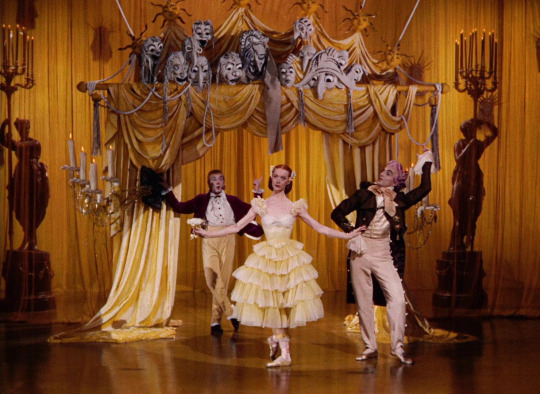
Powell and Pressburger love theatrical performance almost to a fault. Their absolute masterpiece The Red Shoes delves behind the curtain into the catty, cutthroat world of the ballet, and here they put to film an entire opera. And this is most definitely an opera. There are moments of absolute musical bliss scattered in between sequences which drag on almost interminably, and characters take for-fucking-ever to accomplish anything. Lyrics are kinda goofily literal if you think about them for longer than three seconds. Hell, they even managed to squeeze in the endless rounds of applause which conclude any performance—good job all, but Jesus Christ I’d love to go home sometime this week, I have to pee. So it’s opera, love it or leave it. But it’s opera filmed by auteurs who clearly love the medium, which makes it a much more rewarding experience. Regular repertory players pop up here and there, helmed by Robert Helpmann as the incarnation of evil in each tale and Moira Shearer as Hoffmann’s object of desire Stella and first love, Olympia. Helpmann is diabolical down to his very bones, all wild stares and even wilder makeup. Shearer is eminently watchable whenever she dances and here she mixes grace with technical skill and control as the automaton Olympia. She always has such poise and control in her performances. How much her eyes must have been watering after some of those takes, the doll not even blinking once or diverting from its glassy stare. Léonide Massine and Ludmilla Tchérina drop by too for tantalizing dance roles as secondary antagonists. It’s a night at the opera in a decidedly different sense.
The absolute selling point of this film has to be its production design. Nobody does color quite like Powell and Pressburger, every frame painterly in its vibrant handling of Hoffman’s fantastical world. The film leans into an intentionally stagey aesthetic, no attempts made to make sets not seem painted or two-dimensional at points. Puppets and human actors intermingle freely, creating a world where nothing can quite be believed as true—Hoffmann is quite the showman in his recounting of past conquests. They don’t make many attempts to hide their tricks, Dapertutto’s jewel-conjuring simple sleight of hand or edits, for instance. But at points they do take advantage of their medium’s potential, layering images over one another much as they did in The Red Shoes and elsewhere to create ‘magical’ effects. The end result feels like a product plucked out of time, a small but glistening Technicolor gem.
THE RULES
SIP
Two images are overlaid.
Lindorf or his equivalent in a story makes crazy eyes.
Money changes hands.
Applause.
BIG DRINK
The beginning of a tale.
Olympia gets wound up.
Puppet/human or statue/human swap.
#drinking games#tales of hoffmann#powell and pressburger#moira shearer#robert helpmann#leonide massine#drama#opera#offenbach#les contes d'hoffmann#the red shoes
22 notes
·
View notes
Text
symptomatic of my longstanding & somewhat disturbing curiosity that my eyes zoom in on any mention of opticians, such as on pg 17 of the Altmann biography

of all the artisanal goods produced in the 16th-19th century, glasses & other lenses seem to be coded as Jewish in contemporary literature. This pattern is particularly visible in E.T.A. Hoffman's short story "The Sandman," where the antisemitically-coded mad scientist Coppelius (a.k.a. my favorite character) reappears as a seller of magical lenses which deceive the protagonist Nathanael into falling in love with the automaton Olympia.
Within Hoffman's tale the glasses Coppelius handles are associated with the dominant eye-motif of the story & possibly with the alchemical instruments of Nathanael's father, but it doesn't offer an explanation for the broader use of glasses to feminize/racialize/demean Jewish characters in literature. Was optics a field of production not regulated by guilds with restrictive religious covenants? Was it a result of the lingering obsession with Spinoza? Something else entirely?
I know prejudice doesn't "make sense" but I wonder if there's not a term paper in here somewhere. Probably about Knobloch's symbolic inversion of the Coppelius encounters in his descriptions of Dr. Schiff within Herr Moses in Berlin.
#my favorite prof does not hesitate to explain to the class when a character from 19th century literature is an antisemitic archetype#it is somewhat harder for her to explain why they are so consistently my favorite character in the story#coppelius was minding his business doing alchemy & nathanael just happened to project all his trauma onto him#he's not even a victor frankenstein type he takes accountability for Olympia#antisemitism cw#baruch spinoza#eta hoffman#der sandmann#herr moses am alexanderplatz#alexander altmann#herr moses in berlin#heinz knobloch
8 notes
·
View notes
Note
hi, this is about the Frozen Charlotte's drawing I'm doing- do you have any reference for what kind of Dame Darcy themed outfits one would wear? trying to search her resulted in a variety of clothes so I wasn't sure what to pick 😅
Hiii!!! I am SO excited that you’re doing this! Unfortunately I couldn’t find as many photos of her that I would like (as you probably have seen, her artwork is INSANE and amazing), but one look I had in mind was kind of like this: eclectic, decadent, glamorous but kind of messy

Lots of lace, fur, ribbons, and other luxurious materials as well as some funky old-timey accessories.
Have fun! I can’t wait to see!
Edit: I had another thought. Since Worthikids uses so many art/film/literary references, maybe Frozen Charlotte’s could use names from the tales of ETA Hoffman (early 1800s) “The Nutcracker” and “Coppelia” (which were originally horror stories.) There are some good names, like Marie, Clara, Olympia, Franz, and even an evil doctor, Coppelius. He uses themes about autonomy, AI, and dreams and usually there’s a creepy doll and an old man who shouldn’t be allowed around children.
I love the Dr. Caligari and “It” references so much, it would be like adding another branch of classic horror to the mythology.
3 notes
·
View notes
Note
what do you think about komische oper berlin 2015 tales of hoffman
oh I have....Thoughts on this one
TL;DR I hated it. if you liked the production you probably don't want to read this. I'm not very nice about it lol
I know people love Kosky but I won't forgive him for this. idk if I've seen anything else of his.
I watched the archival video stream however long ago that was and I was quite excited because the production looked interested and it professed to be the Kaye edit, which is the most recent critical edit and rarely produced. HOWEVER, it most definitely was not the Kaye edit. instead...
-large chunks of recits were missing -some dialogue was changed -scenes were cut or missing -long spoken monologues were inserted between acts (I presume they were excerpts from the real Hoffmann's work that inspired the opera, which is interesting, but it really didn't work).
Additionally, some lines were switched around or given to other characters. For example, Andres was taken out and replaced by one of the Hoffmanns.
And I say "one of" BECAUSE
they director had three different actors portraying Hoffmann.
I read a note saying he was playing off the tradition of having multiple performers playing the heroines, or even way back when the Villains were sometimes played by different performers.
in my humble opinion, that's just dumb.
there are REASONS that the heroines are played by separate performers. yes, it tends to be better when they're all played by the same diva, and we see that more and more lately, but I do no at all blame performers who choose to just sing one of the ladies because the singing style for each is pretty different. it makes much less sense for the villains to be played by different performers, and as such this is hardly ever seen anymore. Out of the almost 50 filmed productions I've seen, I've only seen that happen once.
so why have different actors play Hoffmann?
aside from "it's kind of funny" literally what is the point? The only thing that makes it vaguely interesting is that one of them is a baritone (in the Giulietta act iirc, it's been a while) and that's interesting because the role was initially going to be written for a baritone but that idea was scrapped because come on, how can a character like Hoffmann not be a tenor.
none of the Hoffmanns look or act the same so there's a deliberate attempt at discontinuity here. idk if they're trying to go for some breaking up of his psyche or id/ego whatever, but it doesn't work. the point of this opera is that the same guy (Hoffmann) goes through all these wacky scenarios with different people who also actually turn out to be the same people. making Hoffmann be different people throughout takes away from this and adds nothing.
also, the Hoffmann/Nicklausse dynamic (which as you all probably know by now is my favorite part of the opera) is not good. they push each other around and at one point Hoffmann grabs Nicklausse by the arm and twists it until he falls over. this is like their first interaction in the production so it doesn't set the mood very well. they do get to dance in the Olympia act and Nicklausse gets to be all protective of him in the Giulietta act, and they do have the Violin Aria but it's in the wrong place and he sings it to the speaking Hoffmann from the Prologue and interludes so it's really disconnected from the rest of the story.
the rest of the production is just weird. Nicole Chevalier plays all the divas and she deserves so much better. Her Antonia and Giulietta were okay but Olympia (and that act overall) were just weird. she was in a box. two of the Hoffmanns kept rotating during the trio des yeux.
the stage and set were interesting--diamond-shaped platform, glass bottles everywhere--but it couldn't save the rest. the only act I enjoyed even a little was the Giulietta one. standing on its own I could see it being okay. Chevalier was a great Giulietta and the Hoffmann in that act was pretty okay, and the set and darkness and creepy chorus members worked to make a pretty decent act.
but then it's ruined because there's no real epilogue, no grand reveal of what the stories all are, and no closing monologue for the Muse followed by the typical jaw-dropping chorus. Instead, we get the speaking Hoffmann lying in a coffin. Nicklausse sits on the coffin and together they sing "la ci darem la mano" as the lights slowly go down.
EXCUSE ME, WHAT?
the director references Don Giovanni a lot in this. yeah, yeah, I know Stella is performing that opera but I'm tired of directors trying to make some grand connections. I really don't think there are any. I think Don Giovanni was just popular. I can't remember all the ways the production referenced Don G and I think honestly I've blocked some of it out but I remember being super annoyed with it because it just. didn't. work.
I liked Nicklausse's outfit. stylish and kinda sparkly. he was so gay but had nothing to work with.
anyway there are my thoughts, hope you enjoyed lol
1 note
·
View note
Text

#please give me more singing doll girls#wanna collect them and put them on my shelf#ride the cyclone#rtc jane doe#penny lamb#the Devil’s carnival#tdc painted doll#Emilie Autumn#opera#the tales of hoffmann#Olympia the tales of Hoffman
143 notes
·
View notes
Text
I think everyone deserves to be just a little bit obsessed with a random specific piece of classical music
#Nutcracker pas de deux and rhapsody of a theme of Paganini make me want to BITE SOMETHING AND SCREAM AND WAIL AND GO INSANE#And Hungarian Rhapsody no. 2 cause haha funny animation reference#Danse macabre is also a good one fuckin love that one#OH OH NEPTUNE FROM THE PLANETS SUITE ITS SO CREEPY I LOVE IT#I know I'm saying a lot of very famous ones but sue me they're good pieces#Its not really c l a s s i c a l but Olympia's aria from tales of Hoffman is awesome if you haven't seen Rachel Gilmore's performance of it#Go watch it now#I could keep going honestly cndnskkfjfjs
11 notes
·
View notes
Photo




A gem fusion based on a costume from an opera clip on YouTube. In the video, a wind-up doll sings “Les oiseaux dans la charmille“ from The Tales of Hoffman. It is also known as “The Doll Song.” The coloratura soprano in that video is Rachele Gilmore. I might post the link in the replies.
Been wanting to draw this for a while! The first concept sketch is from a couple years ago or so. 😅 I included an alternate color palette that’s closer to the costume from the video!
Green Spinel represents the suit of Clubs and as a unique clover-shaped gem. The toy-like mannerisms would come from her. And, Pearl is... a Pearl who also happens to be an operatic soprano. Her horns are inspired by the medieval headwear, hennin. She has a double hennin and veil. These two know each other somehow. I haven’t thought much about their background. Together, they’re Andalusite, but I call them Olympia.
A little note: I did not want to alter the colors of either gemstone in fusion.
But here’s what they might look like with the Andalusite palette.

402 notes
·
View notes
Audio
5 notes
·
View notes
Text

Spent twenty minutes finding the perfect outfit for Olympia
#olympia is the doll from the tales of hoffman#and her designs are always fun#so i made my own olympia#shes such a pretty doll no wonder hoffman falls in love with her
0 notes
Photo








several of my favorites frames from the “Olympia” sequence of The Tales of Hoffman (1951)
51 notes
·
View notes
Text



A new Fairy-Type Fakemon evolutionary line for the Auvut region: Pliérre, Pirouwind, and Ballyre. Each one draws inspiration from classic depictions of clowns (Pierrot for Pliérre, Harlequin for Pirouwind, and Colombine for Ballyre), musical instruments (Pliérre’s is a music box, Pirouwind’s is a hurdy-gurdy, Ballyre’s is a lyre), windup dolls (Ballyre in particular was inspired by the character Olympia from Tales of Hoffman), but most of all, ballerinas. I started off with just Ballyre’s design, as I wanted it to be Elite Four Pixie’s ace, but I realized I had too many ideas to jam into just one Pokémon, so I spread it out across three designs and made them evolutionary relatives. I really like this lot, but I’m worried that they might look too human. What do you think?
Image Text:
1. Pliérre (Pierogoru) - Music Box Pokémon
Type: Fairy Ability: Windup Gender Ratio: 50/50 Height: 7” Weight: 3lbs.
Entry: It is born from a music box that has been discarded and abandoned. It plays the same tune and dances the same dance night and day in the hope that someone will hear. Each Pliérre has a song and dance unique to itself, and when a group of them are together, they take turns performing. This is how they communicate.
2. Pirouwind (Crankuru) - Dance Step Pokémon
Type: Fairy Ability: Windup Gender Ratio: 50/50 Height: 3’4” Weight: 39lbs.
Entry: If threatened, it will whirl around erratically and crank the strange instrument in its hands at an intolerable volume until others come to its aid or its attacker runs away. It evolves from Pliérre when it learns to play its own song. The leader of a group of them will invariably have the most elegant movements and play the most melodious song.
3. Ballyre (Harplé) - Recital Pokémon
Type: Fairy Ability: Windup Gender Ratio: 50/50 Height: 5’11” Weight: 140lbs.
Entry: It constantly keeps the cranks on its joints wound so that it never tires of dancing. The strings on its body vibrate with sweet music. If its cranks wind down completely, it will take about an hour for the organic springs inside its body to wind up again.
#character design#fakemon concept#evolution line#fairy type#fakemon#auvut region#ballerina#music box#pokemon#pencil#pencil drawing
7 notes
·
View notes
Text
Have not been watching ballets for class but watched a segment of one during class and holy SHIT I'm literally gonna drop a link when I have time bc Tales Of Hoffman Olympia's Song lives in my mind rent free now
#the RANGE this song needs blows me away.. it also sounds REALLY familiar and idk why#mark my words im coming back with a youtube link bc i need EVERYONE to see this#hoatm rants
3 notes
·
View notes
Text
I know it feels like sacrilege to not absolutely go crazy over one of Martin Scorsese’s favorite movies, but I had the hardest time getting through The Tales of Hoffman. This was actually my third time starting the movie and the first time I actually finished it.
It makes me sad because I normally love or at least really enjoy Powell and Pressburger’s films, even their lesser ones like Gone to Earth or Oh, Rosalinda! But other than the Olympia segment, I didn’t care for Hoffman at all, save for the visuals.
#unpopular opinion#between this and my disliking chaplin's limelight and donen's two for the road--#-- i guess i'm on the way to having my film lover card revoked#but what the hell#thoughts
3 notes
·
View notes
Text
Playlist Snoop
Tagged by @risingphoenix761
Rules: put your whole music library on shuffle and share the first ten that come up, then tag ten victims.
1. Woman by Kesha
2. Wrong Bitch by Todrick Hall
3. Mirage by Lindsey Stirling
4. Orphan Tears by Your Favorite Martian
5. School Song by Matilda: The Musical
6. Matangi by MIA
7. Herp de Derp by Schmoyoho
8. Olympia's Aria from The Tales of Hoffman by AVAOpera
9. The Boys by Girls Generation
10. The Gospel According to Kanye West by Dan Bull
Tagging: @helly-watermelonsmellinfellon @shadows-haunt-angels @north-peach @thefringeperson @luxis-ao3 @in-the-gardens-of-inspiration @lady--mew @dragongoblet @verner2 @poetryofpetrichor @zhephaesthetics
46 notes
·
View notes
Photo
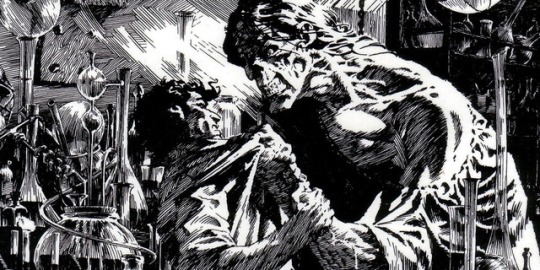
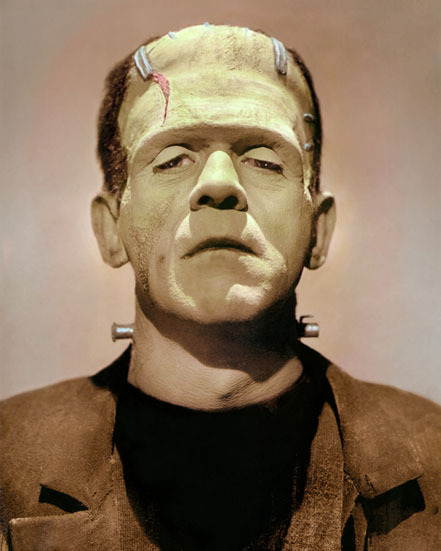

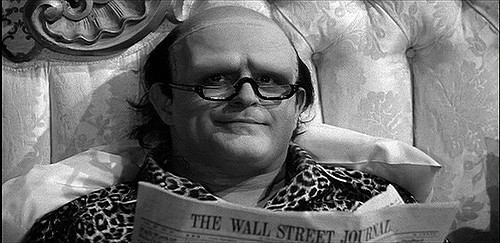

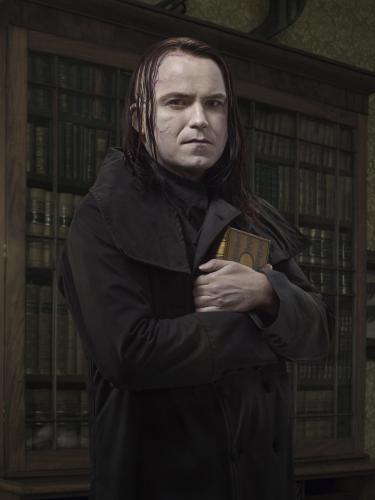


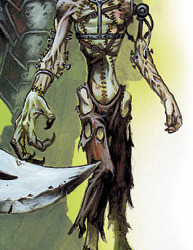
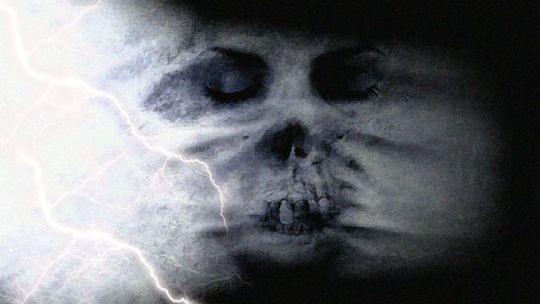
30 Day Monster Challenge 2 - Day #2: Favorite Frankenstein
1.) Mary Shelley/Bernie Wrightson
Put simply, there’s no beating the classic. Mary Shelley’s original monster is a landmark in literature, the coalescence of an idea about monstrosity and humanity that has been developing since the dawn of civilization. Alright, so that might be a little grandiose, but the point stands; the original Frankenstein’s monster is still the best. Like Dracula, every new generation brings a new interpretation, and makes new connections to him. The monster has, through his influence on culture, succeeded in becoming the father of his own race. He is a true monster of God, a divine omen, an abstract entity that conveys the importance of man’s reaching scientific knowledge. He makes us question our limits, our humanity, and how much we as a species are meant to stretch and bend away from the natural order. And to this day, nobody has managed to quite capture that ideal perfectly.
But the late great Bernie Wrightson came pretty close. Known mostly as a comics artist, Wrightson’s version of Frankenstein is the one that comes to mind for me whenever I envision the monster. He is simultaneously majestic, horrifying, and pitiful. Built like an Olympian god with a face like a corpse. Wrightson’s work on his expressions can convey anger, sadness, and the creature’s own weariness for existence. Wrightson’s monster, to me at least, comes the closest to invoking Shelley’s description of Frankenstein’s attempt at an ubermensch, and his subsequent failure.
2.) Boris Karloff
There’s a lot to be said against Karloff’s Frankenstein. It created a pop cultural image that is ultimately at odds with Shelley’s work. The monster’s eloquent suffering is replaced with a series of moans and grunts, and his arc is ultimately threadbare. And yet, Karloff’s Frankenstein brings something absolutely essential to the Frankenstein mythos; innocence. The creature is a victim of its own creation, too powerful and too strange for this world. The damage it causes is the byproduct of its father’s meddling in things man was not meant to know. That’s a perspective we didn’t get a lot of in Shelley’s original novel, and for all that the Universal movie is different from the novel, it meshes with the novel’s morality by reminding the audience of an important message; the value of humanity. Karloff’s monster appeals to our humanity on the most basic level, that of an innocent suffering. In that, I think even Mary Shelley would be proud.
3.) Shuler Hensley
Aaaaand now we’re back to Van Helsing. Okay, legitimately? I think the Frankenstein’s monster is the best part of Van Helsing. I am dead serious. Like Castlevania’s Dracula, the monster here is an amalgam of all the different parts of Frankenstein pop culture. There’s alchemy, mad science, and body horror, but there’s also a search for humanity and a desire to find meaning in life. Also, like everything in this movie, overacting. Just some grade-A overacting. Hensley screams his lungs out shouting Byronic prose, which I always took to be a kind of fun dig at the original monster’s own flair for the overdramatic.
4.) Peter Boyle
Boyle doesn’t bring a lot to the table as the creature in Young Frankenstein. The movie is a loving parody, and it clearly derives mostly from the Universal Studios movie. And yet, there are some subtle hints of brilliance in this portrayal of the creature and Frankenstein. The Universal movie was a source, yes, but Mel Brooks also drew from the novel for his own spin. At the end of the movie, Gene Wilder’s Frankenstein departs from Shelley’s (who is also the character’s grandfather) by taking responsibility and trying to help his creation. And in turn, the creature forgives and protects Frankenstein. I know it’s all just for good fun, but when you start viewing it through the classic metaphors applied to the novel, it creates a more optimistic picture about human progress. (Plus, I’d be remiss if I didn’t include one of my favorite movies on this list.)
5.) Christopher Lee
Christopher Lee’s Frankenstein is actually the version that turned me on to the character. When I was a kid, Boris Karloff’s Frankenstein did nothing for me; he was too sad, too sympathetic to be a monster. Frankenstein’s monster was supposed to be scary to me; stitched out of corpses, with greasy black hair and dead eyes, angry at all the world. (Also dressed in a stylish black suit.) Lee’s monster delivered that to me. The moment I first saw him, I knew that this was how Frankenstein’s monster was supposed to look. Now that I’m older, I can appreciate Boris Karloff’s performance more, but I’ll still always have a fondness for my first favorite Frankenstein.
6.) Rory Kinnear
The youngest monster on this list, Rory Kinnear played Frankenstein’s monster, referred to variously as Adam or Caliban, in Showtime’s Penny Dreadful. Think a cheaper, tawdrier League of Extraordianry Gentlemen. Appearance-wise, Kinnear’s Frankenstein is... it’s- it’s not great. This show had the special effects budget of some pocket lint and the grace of God. But the character is what stood out here. Kinnear’s creature, more than any other, struggles to find his identity, to find a means to turn his monstrosity towards good. His constant failure as people use him and reject him embitters him even more against his creator, but gives him a common bond to other characters. In the show’s last season, Kinnear’s Frankenstein reunites with the family of the man who’s body was used to create him, stepping in apparently returned from the dead. And that and what happens afterward with the character are, I think, worthy additions to the Frankenstein mythos.
7.) Junji Ito’s Frankenstein
Leave it to Junji Ito to create the first truly repulsive Frankenstein. Lee’s came close, but Ito’s portrayal of the monster is nothing short of revolting. In the novel, it’s never made clear why exactly people are repulsed by the creature’s appearance; it might even have been all in the character’s perception. But Ito’s Frankenstein is simply hideous; it’s the first Frankenstein I can think of where you can imagine what he smells like, and it’s like rotting meat. The monster is imposing, too; Ito, like Wrightson, didn’t skimp on making his creature gigantic in proportion. It’s hard to feel sympathy for this creature, and it almost seems to take pleasure in the evil it commits against its creator. It’s easily the nastiest version of the monster you’ll ever meet.
8.) The King of Toyland
Like Van Helsing, The League of Extraordinary Gentlemen is just something I’m going to keep coming back to during this challenge. League’s Frankenstein is mentioned only in passing, making an actual appearance only as a background cameo, but what little is given might just be the most heartwarming version of the character I’ve read. After the canon events of the novel, Frankenstein’s creature wanders the Arctic Circle, despondent and immortal, unable to kill himself. In his wandering, the creature finds a land populated entirely by sentient dolls and toys, hidden in the North Pole behind a magical field. This is Toyland, from the Noddy series of English children’s novels.
The residents of Toyland are ruled over by Olympia, the automaton girl from the opera The Tales of Hoffman. The toys, instead of rejecting the creature, ask him to stay, claiming they need his strength to protect the land. The toys don’t see the creature as unnatural; to them, he is simply another misfit toy, an oversized doll. In time, the creature and Olympia fall in love and marry, and they rule as the king and queen of Toyland. The creature, at last, has found a place and a people he can call his own, somewhere where he is accepted, a purpose for his strength. And somehow, this was all written by Alan “Old Man Yelling at a Cloud” Moore, without a shred of irony or cynicism. And if you don’t think that’s the most sentimental shit in all of Frankenstein lore, then I don’t know what to tell you.
9.) The Flesh Golem
Before even Christopher Lee, the first version of Frankenstein’s monster that I really loved was the one in the 3rd Edition Dungeons and Dragons Monster Manual. Well, okay, it’s not actually Frankenstein’s monster; it’s just a ‘flesh golem’. But energized by electricity, afraid of fire, made of dead men cobbled together? Come on. My older cousin used to tell me that her idea for Frankenstein’s monster was that Frankenstein ran out of human parts, and had to resort to animal material to finish the creature. Frankenstein might have the nose of a pig, or the eyes of a horse; anything to finish the work. That idea never left me, and I thought of it every time I stared at the flesh golem, taking in the metal frame and oversized claw. I remember the first time I actually read the novel, I kept drifting back to that lanky, stitched-up construct with its monster parts and lop-sided face.
10.) The Prometheans
Another tabletop rpg rendition of Frankenstein’s monster, this was a whole game built around them. Promethean: The Created was the fourth of the New World of Darkness line or Chronicles of Darkness or whatever we call it these days. In it, players took on the role of artificially created beings, filled with supernatural energy, whose very presence twisted and corrupted the world around them. Normal humans can’t stand to look at them as a supernatural field makes them immediate targets of hatred, and they are hunted by their own twisted, monstrous bretheren who want to consume their divine power. And yet, for all that, it was a fundamentally optimistic game. Promethean marked a trend in the World of Darkness line that turned away from doom and gloom towards seeking salvation. The ultimate quest of the Prometheans is to gain their humanity, and their journey is about undertaking a pilgrimage to their ultimate realization. Promethean is about personal horror, and defining one’s own humanity.
#30 Day Monster Challenge 2#30 Day Monster Challenge#Frankenstein#Mary Shelley#Horror#long post#young frankenstein#junji ito#promethean the created#penny dreadful
29 notes
·
View notes
Note
i am a fan of opera who is kinda ashamed of being a fan of opera bc it seems like no one in my generation likes it but I saw ur su fusion based off Olympia the doll from "tales of Hoffman" and it made me smile so fuckin big thank u for sharing ur art it made me so happy as a lil opera nerd
I hope you can continue to enjoy opera-- without shame! I'm happy to hear my art made you smile. 😊
5 notes
·
View notes